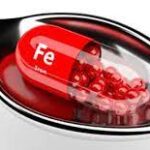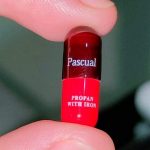Intravenous (IV) Iron Therapy Guidelines

IV iron therapy, also known as intravenous iron therapy, is a medical treatment that involves delivering iron directly into the bloodstream through a vein. It is used to treat iron deficiency anemia or low iron levels in the body when oral iron supplements are ineffective or not tolerated.
Iron deficiency anemia occurs when the body doesn’t have enough iron to produce sufficient red blood cells. This can lead to symptoms such as fatigue, weakness, shortness of breath, and pale skin. In some cases, oral iron supplements may not be absorbed properly or may cause gastrointestinal side effects like nausea, constipation, or stomach upset. IV iron therapy is an alternative option for patients who cannot take oral iron or who require a more rapid increase in iron levels.
During IV iron therapy, a healthcare professional administers iron directly into a vein using a needle and a drip or infusion. The iron is typically combined with a solution, such as saline, to facilitate its delivery and minimize potential side effects. IV iron therapy is generally well-tolerated, but like any medical treatment, it can have potential side effects.
Types of Intravenous Iron Preparations
There are several types of intravenous iron preparations commonly used in IV iron therapy. These include:
- Iron Dextran: Iron dextran is a complex of iron and a carbohydrate called dextran. It is one of the oldest forms of intravenous iron therapy. Iron dextran is available in various formulations, including low molecular weight iron dextran and high molecular-weight iron dextran.
- Iron Sucrose: Iron sucrose is a complex of iron and sucrose, a type of sugar. It is a commonly used intravenous iron preparation. Iron sucrose is generally well-tolerated and has a lower risk of serious adverse reactions compared to some other formulations.
- Ferric Gluconate: Ferric gluconate is a form of iron that is combined with gluconate, a salt of gluconic acid. It is another commonly used intravenous iron preparation. Ferric gluconate is often given over multiple sessions to achieve the desired iron levels.
- Ferumoxytol: Ferumoxytol is a newer intravenous iron preparation. It consists of iron oxide nanoparticles and is given as a single or limited-dose infusion. Ferumoxytol has a longer half-life compared to some other formulations, allowing for fewer treatment sessions.
- Iron Isomaltoside: Iron isomaltoside is a complex of iron and isomaltoside, a type of sugar. It is administered as a slow intravenous infusion and typically requires fewer treatment sessions.
The choice of intravenous iron preparation depends on various factors, including the patient’s condition, iron requirements, tolerability, and the healthcare provider’s preference and experience. Each formulation has its own dosing guidelines and potential side effects, so it is important to consult with a healthcare professional to determine the most appropriate option for an individual patient.






